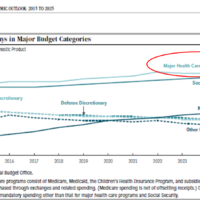Trying to follow what’s being written about implementing health reform has been like trying to drink a waterfall. Having followed these issues for many years I’ve gleaned some fundamental aspects about many of the ideas and recommendations that simplifies how to approach this flood – including how to evaluate ideas and proposals like Patient-Centered Medical Homes (PCMH), Accountable Care Organizations (ACO), Shared Savings, Health Information Exchanges (HIE), Pay-4-Performance (P4P), etc…
Structure v. Reimbursement Systems/Arrangements
First, discussions and descriptions that don’t affirmatively recognize the distinction between Structures and Reimbursement Systems can create significant confusion. For example, the requirements for a PCMH to be recognized by the National Commission for Quality Assurance are structural, but how they are reimbursed will strongly influence how successful such practices are for improving quality of care and controlling costs.
Similarly, at one level ACOs are structures for organizing care – albeit to assume some level of financial risk. But their reimbursement systems and arrangements (both external and internal) will be tremendously important for their clinical and financial success. For example, the health reform law has a “Shared Saving Program” for Medicare and ACOs, but it specifically state that Medicare can reimburse ACOs under three different options:
- A shared savings arrangement (essentially a one-sided risk situation where the ACO can get savings but isn’t at risk if costs are higher than projected)
- Partial capitation (i.e., some two-sided risk)
- And, any other type of arrangement that the Secretary of HHS thinks makes sense.
Until the proposed recommendations for this part of the health reform law come out, (and they are expected very soon), it is mostly speculation as to what each of those three options might look like – as well as what related options might be created as demonstrations by the new Center for Medicare and Medicaid Innovation.
Process v. Outcome Measures
Another confusing aspect of discussions about reformed or transformed healthcare is a blurring between measuring processes and outcomes – both clinical and economic. Part of this blurring occurs because process measures are often used as proxies for outcomes. While these type of proxy measurements are common in clinical medicine, (e.g., blood cholesterol levels are a proxy for risk of heart attacks and stokes), using them for broad transformations in healthcare is more challenging because there is generally a very strong desire to see the savings (or improved clinical outcomes) before investing time or money to expand the reforms.
Conclusion: Focus on the Fundamental Big Questions
So, to simplify thinking about how to create a better healthcare system in the US, I recommend coming back to these two sets of questions:
- What is the structure? And what are the reimbursement systems/arrangements?
- What process and outcome measures will be used to evaluate the new structures and reimbursement systems? And how do those process and outcome measure relate to each other, i.e. how do we think the process measures lead to better outcomes?


Health reform or transformation is a question that I have been wondering. Everyone is talking about cost effectiveness, well if we transform healthcare into being proactive we may see a drop in cost. Being reactive cost more money and causes more health problems for the nation, especially older people.
Wow it is a nice blog for to get basic fundamentals about health reforms and transformation.
The process and outcome measures of this health reform transformation should really be considered. I agree that this can be more challenging because there is generally a very strong desire to see the savings.
nice post for Fundamentals of Health
Thanks